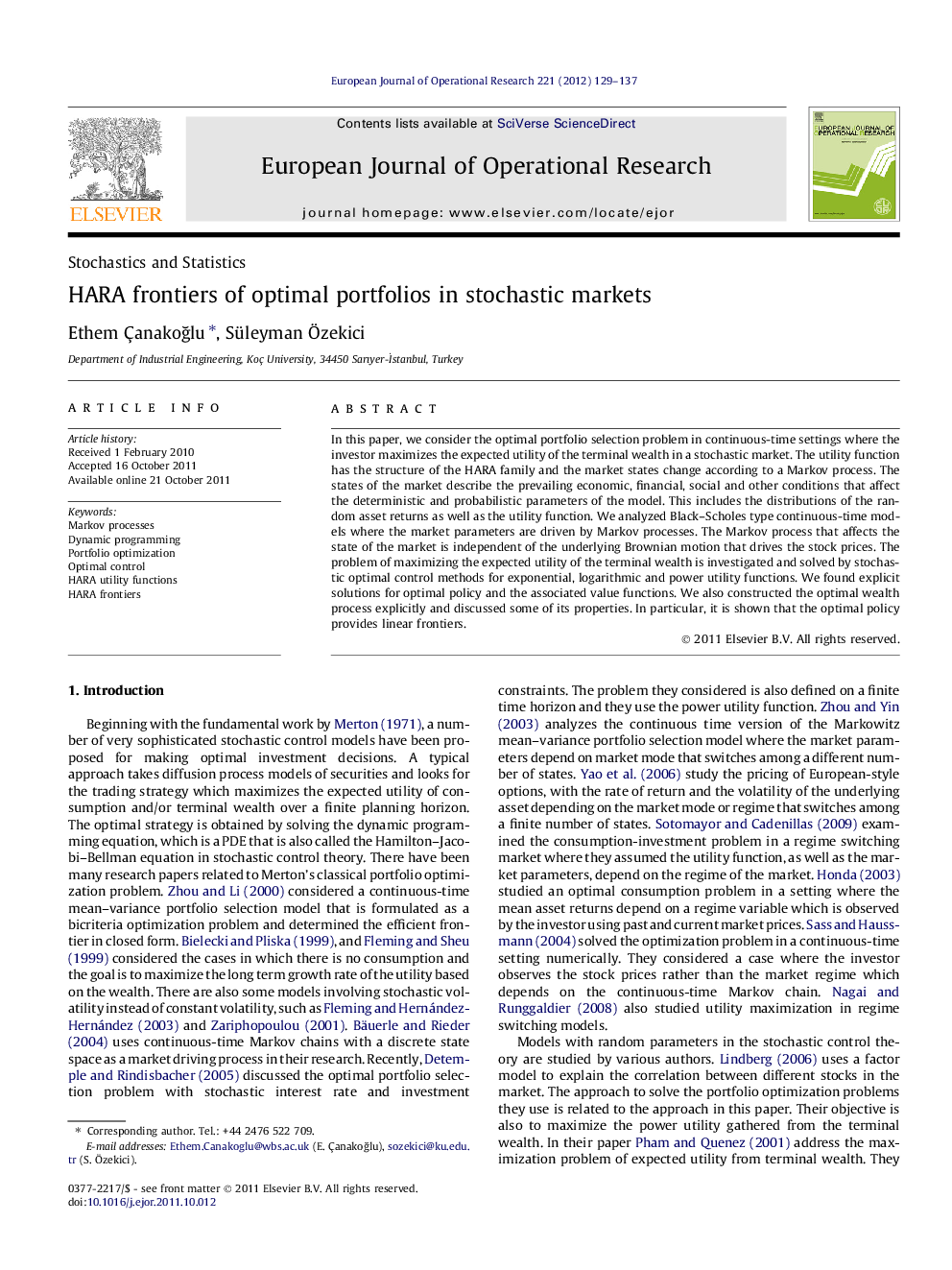| Article ID | Journal | Published Year | Pages | File Type |
|---|---|---|---|---|
| 476836 | European Journal of Operational Research | 2012 | 9 Pages |
In this paper, we consider the optimal portfolio selection problem in continuous-time settings where the investor maximizes the expected utility of the terminal wealth in a stochastic market. The utility function has the structure of the HARA family and the market states change according to a Markov process. The states of the market describe the prevailing economic, financial, social and other conditions that affect the deterministic and probabilistic parameters of the model. This includes the distributions of the random asset returns as well as the utility function. We analyzed Black–Scholes type continuous-time models where the market parameters are driven by Markov processes. The Markov process that affects the state of the market is independent of the underlying Brownian motion that drives the stock prices. The problem of maximizing the expected utility of the terminal wealth is investigated and solved by stochastic optimal control methods for exponential, logarithmic and power utility functions. We found explicit solutions for optimal policy and the associated value functions. We also constructed the optimal wealth process explicitly and discussed some of its properties. In particular, it is shown that the optimal policy provides linear frontiers.
► We model a continuous time market using Markov decision process. ► The states of the market affect the deterministic and probabilistic parameters of the model. ► The asset prices follow geometric Brownian motion. ► The objective of the investor is to maximize the terminal utility function which is HARA type. ► Explicit formulas or procedures are obtained in order to determine the optimal portfolio management policy.
